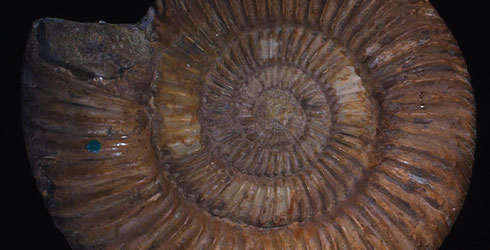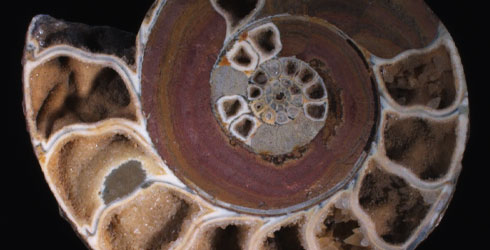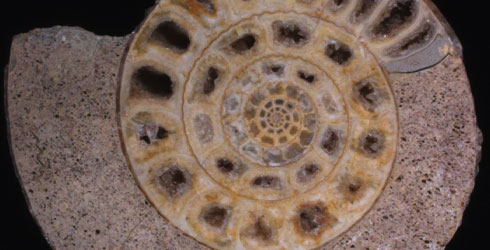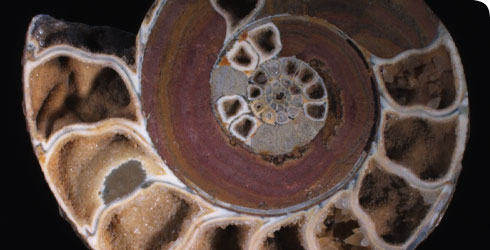Parkinsonia parkinsoni
Parkinsonia parkinsoni (J. Sowerby 1821) belongs to the superfamily Perisphinctaceae, an extinct group of ammonites that were common in the Mesozoic seas.
Parkinsonia parkinsoni is a zone fossil of the Late Bajocian, Middle Jurassic, used to identify and date the rock layer in which they are found, and to correlate strata world-wide.
This ammonite is commonly found in exposed sea cliffs of southern England, particularly at Burton Bradstock, Dorset.
Parkinsonia parkinsoni was named in honour of the famous physician Dr. James Parkinson (1755-1824) who described Parkinson's disease. Dr. Parkinson was also a well known palaeontologist.
Species detail

Parkinsonia parkinsoni.
Ammonoids were soft-bodied organisms with an external shell.
Parkinsonia parkinsoni has
- a compressed spiral shell
- with strong, biplicate ribbing and lateral tubercles
- internally the shell is divided up into chambers
- chambers would have been filled with gas acting as a buoyancy aid.
-

Taxonomy
Learn more about the structure of Parkinsonia parkinsoni and how it helped the ammonites lifestyle.
-

Habitat and distribution
Discover more about the habitat in which Parkinsonia parkinsoni lived and where fossils of this species can be found today.
-

Stratigraphy
Parkinsonia parkinsoni fossils are approximately 168 million years old and can be used ot determine the age of strata.
-

Dr James Parkinson
Dr. James Parkinson (1755-1824) was the physician who described Parkinson's disease however he was also a well known palaeontologist. Find out more about this this accomplished individual.
-
References
Get reference material for Parkinsonia parkinsoni
Images

Parkinsonia parkinsoni is an ammonite zone fossil.

Parkinsonia parkinsoni has a compressed spiral shell with strong, biplicate ribbing and lateral tubercles. Internally the shell is divided up into chambers

Parkinsonia parkinsoni a very common ammonite of southern England where it is found in exposed sea cliffs.

Parkinsonia parkinsoni has a compressed spiral shell with strong, biplicate ribbing and lateral tubercles. Internally the shell is divided up into chambers
About the author
Lindsay Percival
Former Curator of Invertebrates, Department of Palaeontology.
Toolbox
Zone fossil
A fossil which is characteristic of a particular period in geological time and has precise distribution within the rock record. Zone fossils can be used to identify and date the rock layer in which they are found, and to correlate strata world-wide.
